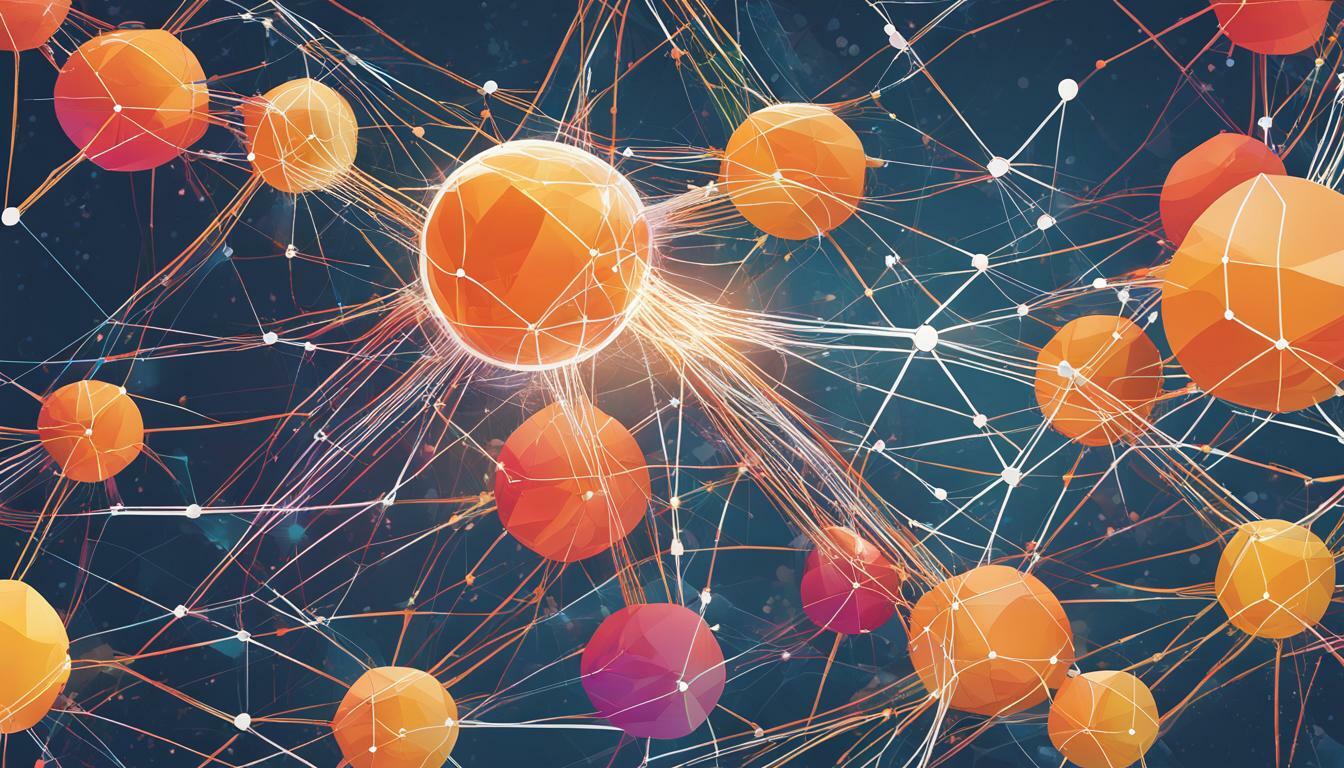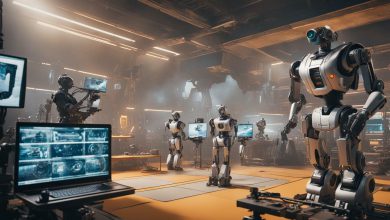
Artificial Intelligence (AI) is a rapidly growing field that has transformed the way we live and work. At the heart of AI systems are neural networks, which have revolutionized the way we approach machine learning and decision-making processes.
Neural networks are the backbone of modern AI and are responsible for the intelligent behavior of machines. They are modeled after the structure of the human brain and are designed to process complex information and learn from it. Understanding neural networks is essential for anyone interested in the field of artificial intelligence.
Key Takeaways
- Neural networks are the backbone of modern AI.
- They are modeled after the structure of the human brain and are designed to process complex information and learn from it.
- Understanding neural networks is essential for anyone interested in the field of artificial intelligence.
The Basics of Neural Networks
Neural networks are modeled after the structure and functioning of the human brain. They are composed of interconnected neurons that work together to perform specific tasks. Understanding neural networks is essential to unlocking the full potential of modern artificial intelligence.
To understand how neural networks work, it’s important to first understand their basic structure. They consist of layers of interconnected nodes, which are also called neurons. Each neuron receives input and processes it before sending output to the next layer of neurons. This process continues until the final layer produces the desired output.
Neural Network Tutorial
Let’s take a closer look at the composition of a neural network. There are three primary types of layers that make up a neural network: input, hidden, and output layers. Input layers receive data from the outside world and pass it on to the hidden layers. Hidden layers process the data and output it to the output layer. The output layer produces the final result or output.
The connections between neurons are assigned weights, which determine the strength of each connection. These weights are refined during the training process, where the neural network learns to make accurate predictions based on the input it receives.
By modifying the number of layers and neurons within each layer, the performance of a neural network can be optimized for specific tasks. For example, a neural network designed for image recognition would have a different architecture than one designed for language processing.
In conclusion, understanding the basics of neural networks is essential for anyone interested in the field of artificial intelligence. By learning how neural networks work, we can unlock their full potential and continue to advance the capabilities of AI systems.
AI Algorithms and Neural Networks
Neural networks are a fundamental component of artificial intelligence. They form the backbone of many AI algorithms and enable machines to learn and make intelligent decisions.
Machine learning algorithms use neural networks to recognize patterns and make predictions based on data. Deep learning algorithms, on the other hand, employ complex neural networks to perform tasks such as speech and image recognition with high accuracy.
Neural networks have revolutionized the field of AI, enabling machines to perform tasks that were previously thought to be impossible. As neural networks continue to advance, so do the capabilities of AI systems, unlocking new possibilities for innovation.
The Advancements in Neural Networks
Neural networks have come a long way since their inception in the 1940s. In recent years, significant advancements have been made, making them the backbone of modern artificial intelligence. These advancements have led to breakthroughs in machine learning and deep learning, enabling machines to perform complex tasks that were once thought impossible.
A major advancement in neural networks is the development of convolutional neural networks (CNNs) and recurrent neural networks (RNNs). CNNs have proven to be immensely effective in image and speech recognition, while RNNs are used in natural language processing and predictive analysis. The creation of these sophisticated neural network architectures has allowed AI algorithms to process vast amounts of data, leading to more accurate and reliable predictions.
Another significant development is the increased processing power of computers, which has enabled the training of large neural networks. In the past, training neural networks was a time-consuming process that required significant computational resources. With the advent of more powerful hardware, researchers can now train neural networks in a matter of days or even hours.
Finally, the development of transfer learning has allowed the re-use of pre-trained neural networks for new applications. Transfer learning involves taking a pre-trained neural network and fine-tuning it for a specific task. This approach reduces the time and resources required to train a new neural network from scratch, making it a valuable tool in the development of AI applications.
The advancements in neural networks have paved the way for the development of sophisticated AI systems that are transforming industries. With the increasing demand for AI, it is clear that neural networks will continue to play a critical role in the future of artificial intelligence.
Applications of Neural Networks in AI
Neural networks play a vital role in various domains of artificial intelligence. Let’s explore some of the applications where neural networks have been instrumental.
Image and speech recognition
Neural networks enable machines to recognize objects, faces, and even emotions in images or videos. They also help in speech recognition, allowing machines to identify and transcribe spoken words accurately.
Natural language processing
Neural networks are used in natural language processing, where they help machines understand and process human language. They are used in applications such as language translation, sentiment analysis, and chatbots.
Autonomous vehicles
Neural networks are used in autonomous vehicles, where they enable machines to perceive their surroundings, calculate distances, and make decisions about driving. They help the vehicles to navigate complex environments and avoid obstacles.
Predictive analysis
Neural networks are used in predictive analysis, where they analyze large amounts of data and identify patterns and trends. They enable machines to make predictions about future events or outcomes based on historical data.
These are just a few examples of how neural networks are being used in AI. Their versatility and effectiveness have made them the backbone of modern AI systems.
Challenges and Future Directions
Despite the remarkable progress made in the field of neural networks, there are still significant challenges that need to be addressed. One of the major issues is the limited interpretability of neural networks. While they are highly accurate in various tasks, understanding how they arrive at their decisions remains a challenge.
Another challenge is the need for large amounts of data to train neural networks effectively. This requirement can be an obstacle in domains where data is scarce or expensive to obtain.
Furthermore, the current neural network models and algorithms have limitations in their ability to handle sequential and time-varying data. This has resulted in the emergence of alternative architectures, such as recurrent neural networks and transformers, that address these issues.
Looking towards the future, the field of machine learning continues to evolve rapidly. The most exciting trends in this area include the integration of neural networks with other types of machine learning algorithms, such as reinforcement learning, and the development of more efficient and scalable models and algorithms.
Deep learning, a subset of machine learning that utilizes neural networks with multiple layers, is also making significant strides. One of the most promising areas of research in deep learning is the development of unsupervised learning methods that can learn from unlabelled data. This has the potential to significantly reduce the need for large amounts of labelled data.
Conclusion
In summary, understanding neural networks is crucial in comprehending modern AI. Neural networks form the backbone of AI systems, enabling machines to learn and make intelligent decisions. By delving into the basics of neural networks, readers can understand their structure and functioning, including the essential components that make up an artificial neural network.
The relationship between AI algorithms and neural networks is also vital. Neural networks form the core of many AI algorithms, such as machine learning and deep learning algorithms, which have applications in various fields. The advancements in neural networks have contributed significantly to the progress of modern AI, enabling breakthroughs in research and the development of more sophisticated neural network architectures.
The practical applications of neural networks in areas such as image and speech recognition, natural language processing, autonomous vehicles, and predictive analysis are also worth noting. However, this field still faces several challenges, including the limitations of current neural network models and algorithms. Nonetheless, as emerging trends in machine learning and deep learning gain traction, the future of neural networks looks promising.
In conclusion, neural networks demystified is an essential topic to grasp for anyone interested in the field of artificial intelligence. By understanding the backbone of modern AI, readers can gain insights into the inner workings of AI systems and be better equipped to delve deeper into this exciting field.
FAQ
Q: What are neural networks?
A: Neural networks are a type of artificial intelligence model inspired by the structure and functioning of the human brain. They consist of interconnected nodes, or artificial neurons, that process information and make intelligent decisions.
Q: Why are neural networks important in AI?
A: Neural networks are the backbone of modern AI systems. They enable machines to learn from data, recognize patterns, and make predictions or decisions. Understanding neural networks is crucial in the development and advancement of artificial intelligence.
Q: How do neural networks work?
A: Neural networks work by learning from data through a process known as training. They adjust the connections between artificial neurons based on input-output patterns, allowing them to generalize and make accurate predictions or classifications.
Q: What are some applications of neural networks in AI?
A: Neural networks are used in various domains such as image and speech recognition, natural language processing, autonomous vehicles, and predictive analysis. They enable machines to perform tasks that traditionally required human intelligence.
Q: What are the challenges in neural networks?
A: Neural networks face challenges such as overfitting, lack of interpretability, and scalability. Researchers are continuously working on improving these models and algorithms to overcome these challenges and make neural networks more robust and efficient.
Q: What is the future direction of neural networks?
A: The future of neural networks lies in advancements in machine learning and deep learning. Researchers are exploring new architectures, algorithms, and training techniques to enhance the capabilities of neural networks and further advance the field of artificial intelligence.








